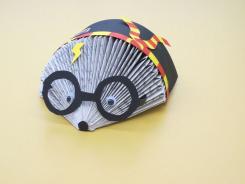Christmas is traditionally what people think of as a joyous, family orientated time of year, but for those with dyspraxia/DCD it can be very stressful indeed. Apologies to the adults with dyspraxia/DCD reading this but I write as a Mum and so this relates to children. Adults, I hope can avoid some things or make some choices about the way the day pans out.
Some children with dyspraxia/DCD love all the chaos but some really find it very anxiety provoking and this blog is written with them in mind..
Children with dyspraxia/DCD are rather at the mercy of family traditions and expectations but for someone who craves 'sameness' and who perceives the world in a different way, these expectations can simply be too much and if there is not some understanding and forward planning the day can turn from one full of joyous intentions to a stress filled nightmare.
Children with dyspraxia/DCD often have visual perceptual problems and this affects the sense they make of what they see (it answers the issues with heavy footedness, stumbling into familiar things, finding stairs problematic etc).
At Christmas we may talk of Santa and how he visits the 'good' boys and girls. If your child is not receiving appropriate/adequate support at school then he will already assume that this message precludes him, as afterall he may have been repeatedly told that he is naughty, lazy and lacks concentration. Then we tell him that a complete stranger dressed in a red costume will enter his bedroom uninvited and he needs to be asleep. My son who has severe dyspraxia/DCD spent the entire night awake and upright as a small child in complete fear of this visitation. One year I had absolutely no sleep at all on Christmas Eve and then had to prepare dinner for a houseful. It was miserable! I was delighted when Santa was outed as we all got some sleep on Christmas Eve. How many photographs have we all seen of terrified children being made to sit on Santas lap. It's a madness!!
(Facebook.com)
Christmas day starts with excited siblings, twinkling lights, brightly coloured wrapped objects and an air of expectation which may at best make no sense to the child with dyspraxia/DCD and at worst be completely terrifying.The day continues with the ingestion of energy inducing sweets and treats, the banging of crackers, visitors to engage with and screams of joys, music, games and general mayhem. For the child who lives and learns differently it may be a nightmare scenario and we need to consider their needs in order to make the day successful for them, for you and for your family. It is both bad and sad to have to deal with meltdowns and the looks of disdain and disapproval that they often invite from others. It can make the day heavy with sorrow and everything that you didn't want it to be.
We as parents and /or carers need to give some consideration to the day before it arrives and to prepare our child with additional challenges for what it is likely to entail.
Tips for Christmas Calm.
Don't overstretch yourself. If it is your 'turn' to have all the family then let them know that you already have quite a lot to consider and so you will need their help. Don't be afraid to ask for help. Only participate in the things that will make you happy or that have special meaning. Don't feel obliged to do things because others think it is the right thing to do.
If you haven't got your shopping done yet, then don't take your child with you as you rush around getting things done. Shopping centres at Christmas are a sensory nightmare. Shopping online is much less problematic.
Talk to your family and visitors about what Christmas may be like for your child and how they can help.
Talk to your child. If they beleive in Santa, let them know that he doesn't have to enter their bedroom. He can leave their presents with you. If your child thinks they have been bad, explain that no one can be good all the time and Santa understands that they find life more difficult than their siblings/friends.
Create a visual time table for your child. Map out what will happen and when so that they can cope better with the changes to routine. I know that there is a degree of sadness in removing all the spontaneity but it really does pay dividends.

(Twinkl)
Don't put all the decorations up on Christmas Eve for the children to wake up to. Introduce them over time.
If you are going elsewhere for Christmas then pack a backpack with some favourite and familiar things in it. Ask the person who's house it is to prepare a quiet space that your child can retreat to if they need to and take some ear defenders if things are likely to get raucous. Have a Christmas free zone in your own house too.
Take turns to play games and spend time with your other children. Your child with additional needs can perhaps play on an Ipad while you do this or your partner could take them for a walk or read them a story.
Stagger the opening of presents and make them easier to open. Tons of sticky tape can be very difficult for someone with poor fine motor skills. It can be fun to wrap up a familiar or favourite toy.Too much all at once can be overwhelming.
Be aware of their sensory needs. Balloons or Christmas crackers may be an absolute disaster for some, others may find the excitement too much, or the flashing lights difficult to deal with. Visitors may like to hold off from wearing too much perfume which can be difficult for some.
Give your child some jobs that they can focus on. Perhaps they can take coats or wander around with nibbles for people.
If you are cooking dinner then buy some ready prepared things. No one needs to know and it will save you time and stress.
Remember to be kind to yourself. You are giving extra all the time and Christmas should be fun for you too. Don't rise to any criticism that comes your way from people who 'know' how to parent your child better than you do.
Remember that the best surprise for a child with dyspraxia/DCD may well be no surprise and that is fine. Go with it and make the day calmer, happier and more successful for everyone.
For further information re dyspraxia/DCD please visit www.dyspraxiafoundation.org.uk






















